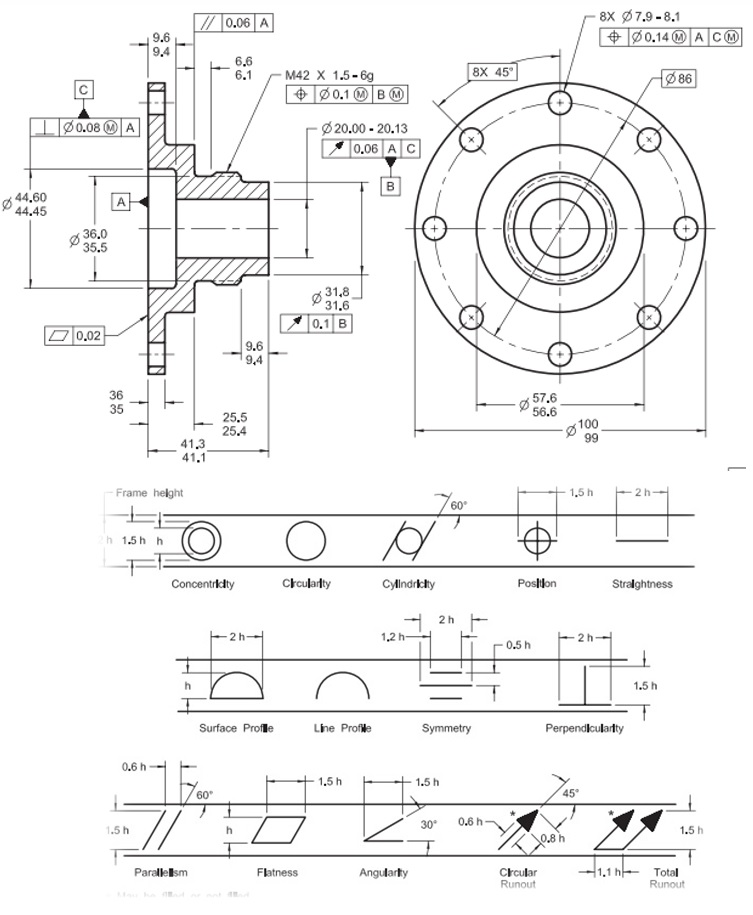
Geometric Dimensioning and Toleranincing GD&T
Comprehensive Course
GD&T is a universal design language applied by manufacturers around the world and is widely considered by mechanical engineers to be an essential tool for communicating design intent, ensuring parts meet the desired form, fit, function and assembly.
Download Brochure
Introduction to ASME Y 14.5M:2009
• What is GD&T?
• When should be GD&T used?
• GD&T vs Coordinate Dimensioning and Tolerancing
• Review of General Dimensioning
• Units of Linear and Angular Measurement
• Use of 3D CAD data/Model Based Definition
• Plans to Qualify Products
• ASME vs GPS concept of Tolerancing
Projections & Coordinate Systems
• Isometric, Dimetric, Trimetric Projections
• Cartesian, Cylindrical, Spherical
Geometric Tolerancing
• Fit types
• Symbols
• Feature Control Frames
Datums
• Establish Datum
• Origin of Datum
• Datum Targets
• Application of 3-2-1 rule, RPS, Networking,
• Datum Feature Selection
• Inclined Datum
• Cylindrical Datum Features
• Multiple Datum Features
Form Tolerances
• Circularity
• Straightness
• Flatness
• Cylindricity
• Profile (Bilateral, Unilateral)
Tolerances of Location
• Maximum Material Condition
• Concentricity/Co-Axiality
• Symmetry
Limit Tolerancing, ±Tolerancing
Geometric Tolerancing
Comparison
• Theoretically Exact Dimension
• Application of MMC concept vs Limit Tolerancing
• Effect of Maximum Material Condition
• Effect of Least Material Condition
• Effect of Regardless of feature
• Zero Tolerance
• Composite Tolerances
• Evaluation of CMM measurement/ Paper Gage Evaluation
Rules:
• Virtual Condition/Resultant Condition/Maximum Material Boundary/ Rule #1
• Datum Modifiers/Rule #2
• Pitch Diameter Rule
• The Virtual Condition Rule
Tolerance of Orientation
• Parallelism
• Perpendicularity
• Angularity
Run-Out Tolerances
• Tolerances of Run-Out
• Total Run-Out
• Concentricity vs. Run-Out Tolerance
The course covers the principles of GD&T, explaining how it is applied universally to manufacturing processes, and how to read and make interpretation for measurement processes, as well. It is designed to give participants a thorough understanding of GD&T that they can immediately use in their work.
